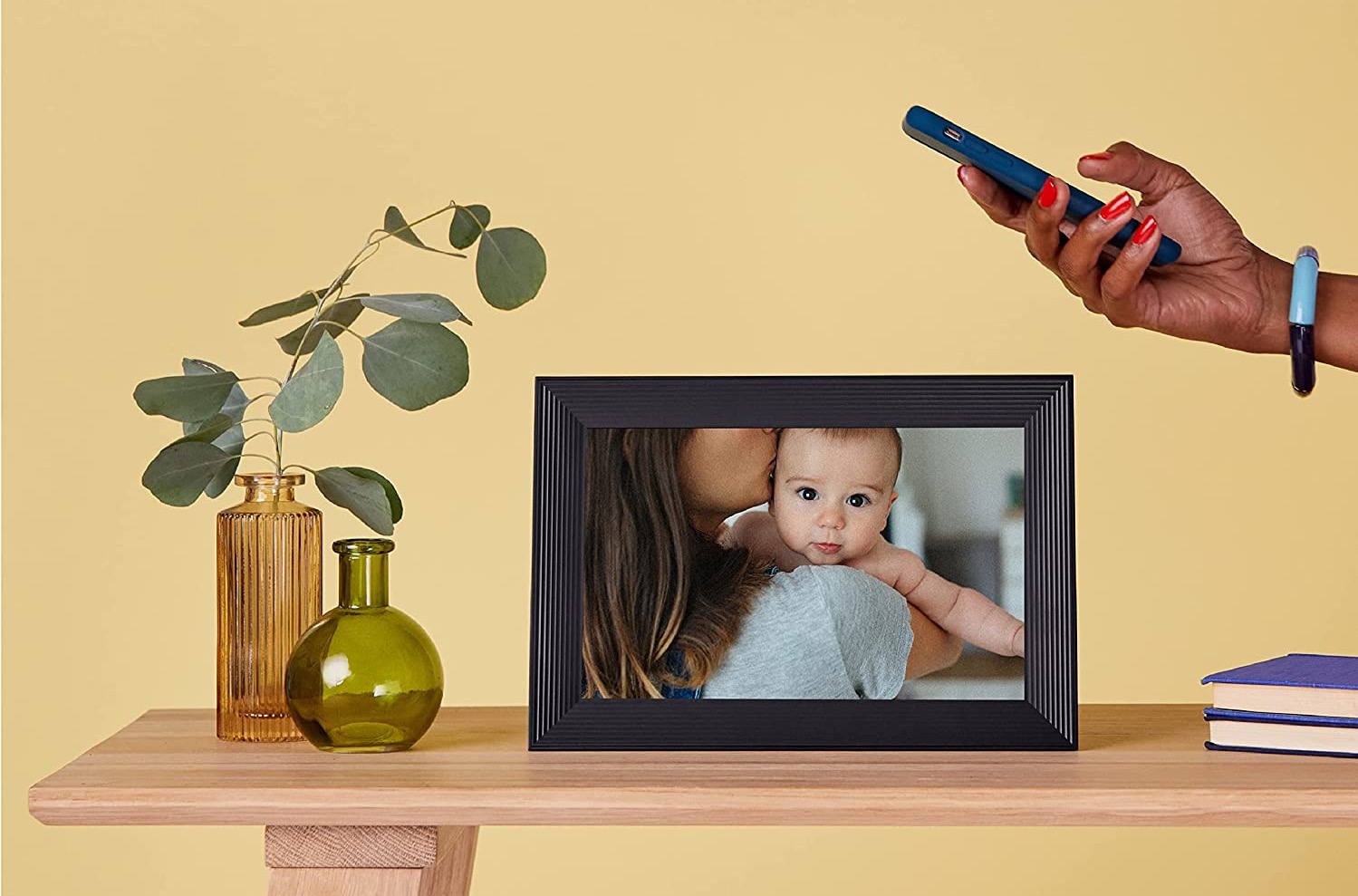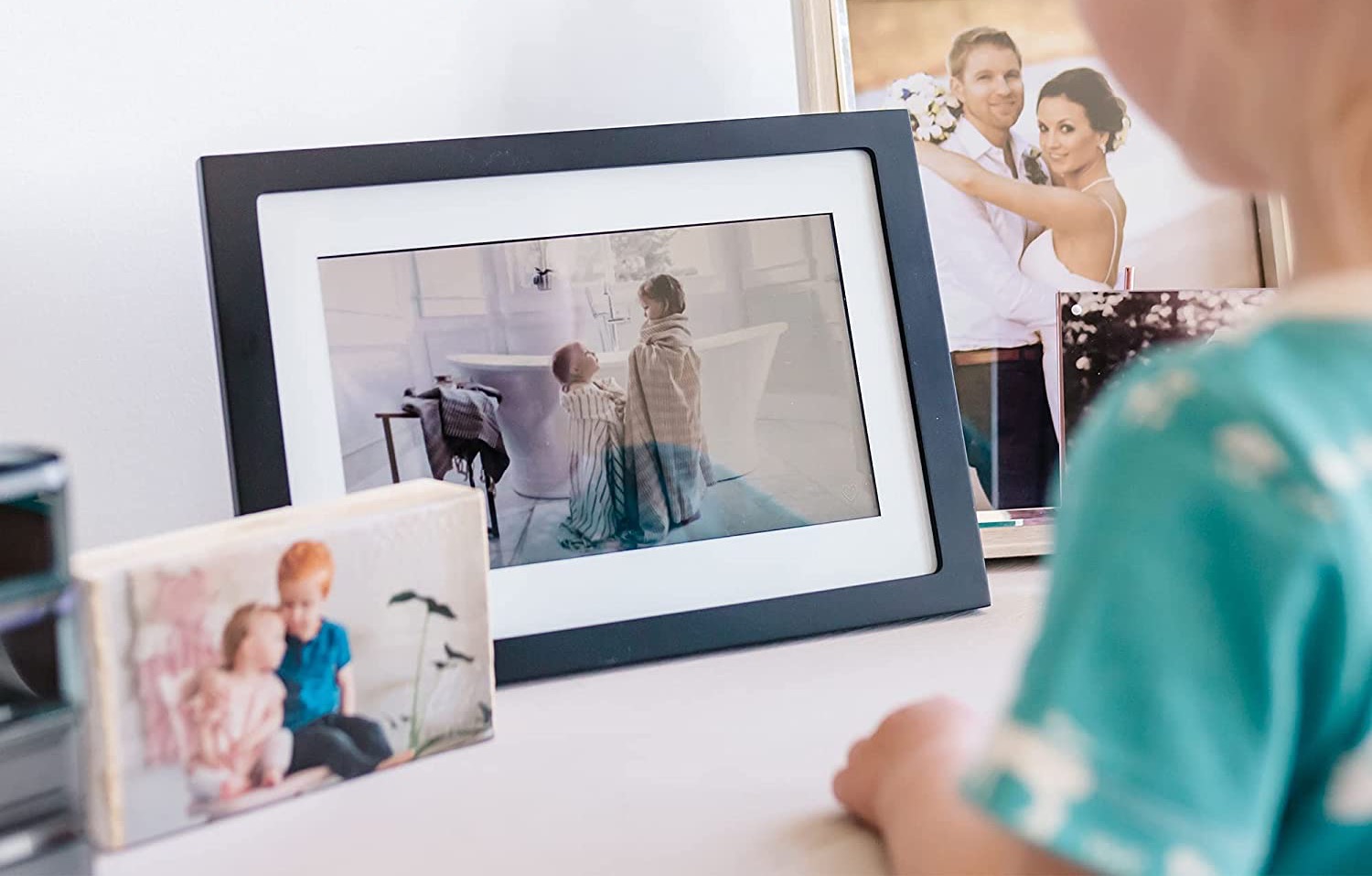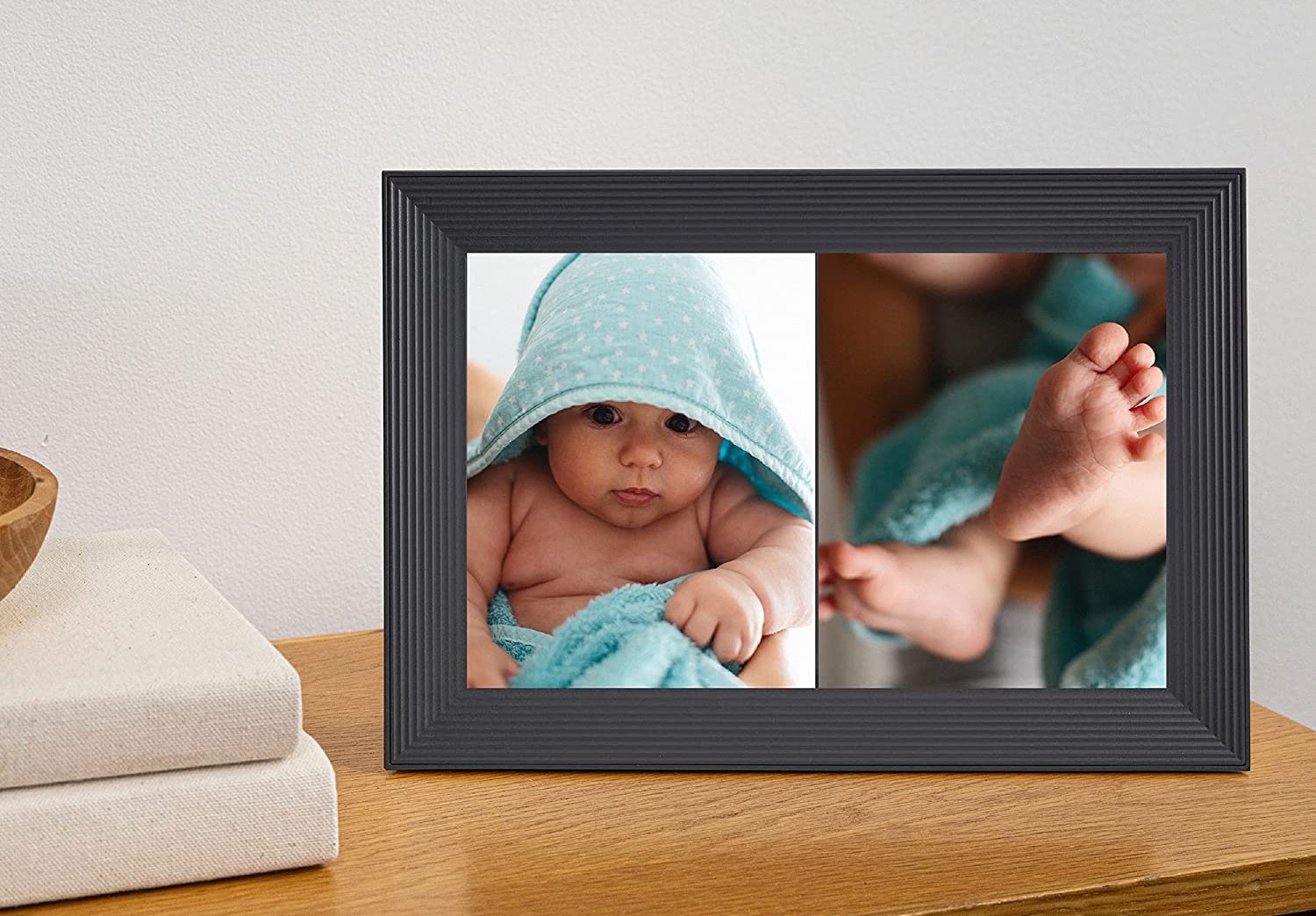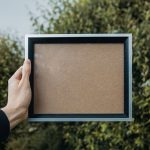More importantly, the Aura Carver and the Skylight digital photo frame make amazing gifts, especially during the holiday season. After all, you can mix old and new photos to relive your prized moments. Hence, this brings us to an important question—which digital photo frame is better between the Aura Carver and the Skylight photo frame? Are the features of the Skylight photo frame enough to justify its price tag? Or, is it the other way around? Well, that’s what we will find in this post today, as we pity the Aura Carver against the Skylight frame and see which digital photo frame is better. So, without further ado, let’s get going, shall we? But first,
1. Design & Resolution
The Aura Carver is known for its sleek and minimalistic look. The sleek and elegant design makes it apt to place anywhere, and the odds are high that it will blend seamlessly into any place. Its back has a pyramid-like design, making it easy to prop up minus any kickstand. However, this feature also ensures that the Aura Carver can only be used in the landscape mode and not in the portrait mode.
The screen is not a touchscreen. But it packs a sleek touch-sensitive strip at the top to let you control the photos. Apart from the strip, there’s no physical button or power switch. Plus, there is no option to hook any USB drive. The lack of a touchscreen has its upsides. For example, you won’t have a fingerprint-ridden digital photo frame on your mantle piece.
The Aura Carver has a resolution of 1920×1200, and the 10.1-inch screen is wide enough to let you view your memories with ease. Note that there is no mat board, and the photos are displayed edge-to-edge. On the other hand, the Skylight digital picture frame is a 1280 x 800 resolution Wi-Fi frame. Unlike the one above, it doesn’t need a continuous Wi-Fi connection and can even display photos when not connected to the Wi-Fi. It looks every bit like a modern photo frame, all thanks to its slim and sleek design. However, the feature that sets it apart from its counterpart is the mat board on the sides. The mat ensures that the photo frame blends well with conventional photo frames.
At the same time, it has a nifty kickstand at the back that you can prop up. It’s a touchscreen photo frame, and you can swipe on the photos to change them. And guess what? You can like a photo. The touchscreen ensures you can zoom in on the photo to view it in all its glory.
Aside from that, it doesn’t have USB ports and the like. All you need to do is connect it to a power source to power it up.
2. Storage
Gone are the days when digital photo frames used to run on USB flash drives and memory cards. ‘Tis the age of cloud storage, and the Aura Carver is no different. As long as it’s connected to your home Wi-Fi and you have uploaded the photos, it should display them all right. The only downside is that it must be connected to your home Wi-Fi network.
It doesn’t support external devices like memory cards, camera cards, or USB drives. You’ll need to upload photos using the Aura app or the web interface. Also, the photo frame saves all the uploaded photos in the cloud. Apart from the app and the web interface, it supports Google Photos, iCloud Photos, and your phone’s gallery. Plus, it supports smart assistants like Alexa and Google Assistant. It’s worth noting that the Aura Carver photo frame doesn’t support videos and supports only photos. The Skylight digital photo frame has a slightly different approach. It lets you create a unique email ID when setting up the frame. All you need to do is send the photos to this email address, and the photos will appear after some time. The good news is that if you forget to upload any photos for some time, you will be reminded of the same.
You can share the email address with your close friends and family to let them share their photos. Of course, you will have to ensure they do not spam the frame with irrelevant and unwanted photos. Other than that, you can also subscribe to the paid Skylight Plus plan. This one lets you upload videos, add a caption to your favorite photos, and back up your photos to a cloud. Cool, we’d say. The only issue is that you will have to shell out an additional $3.35 a month, which will add to the cost in the long run. And yes, you also get the advantage of a companion app. Naturally, uploading an image via the app is much more convenient than email. Lastly, there’s no Google Photos or Apple Photos support. Plus, it does not support Alexa or Google Assistant.
3. Photos, Videos & Image Quality
Now, let’s address the elephant in the room—Image Quality. The Aura Carver displays colorful, bright, and true-to-life photos. As long as your photos are sharp and clear, it’ll do its best to display them at their best. The brightness automatically adjusts as per the ambient lighting, and there is no additional option to adjust the color or the brightness. Hence, you must take utmost care to upload your best photos. Moreover, the viewing angle is wide, and you can see the photos from the sides. Other than that, there isn’t any limit on the number of photos you can upload. The photo frame will do the job of cycling through them. The best part is that the built-in algorithm also plays a big role in displaying the photos. For one, it will group all the similar photos. Secondly, it will remove any duplicate photos from getting displayed, even when you upload them by mistake. Thirdly, it will transform any two vertical photos side-by-side so that no screen real estate gets wasted.
Like most digital photo frames, it comes with an ambient sensor. It shuts off the display when the room is dark. You can also set the time when you want the frame active. As opposed to the algorithm-backed vertical image feature of the Aura Carver, the Skylight frame adds blur to the sides of vertical photos. While the feature in itself doesn’t look bad, it means that you end up wasting some precious screen space. For the record, it can only display photos in a 16:9 aspect ratio. Aside from that, the Skylight digital picture frame delivers clear, crisp, and vivid photos. There is no significant pixelation. As long as the uploaded photos are sharp, you should see them as such. And yes, it doesn’t let you set the brightness levels. But it has a cool setting that lets you adjust the timing of individual photos from 5-second to 240-second delay.
4. Ease of Use
So, how do the Aura Carver and the Skylight photo frame measure up when it comes to ease of use? Thankfully, both photo frames are extremely easy to use. The setup process is easy and simple. All you need to connect the frames to a power source and your home Wi-Fi, and they will walk through the rest of the setup process. The only thing you will need to consider is that if the photo dump is huge, the frames will take time to sort through and display. It is especially true in the case of the Aura Carver frame and when you connect it to photo services like iCloud and Google Photos. That said, if you are about to start with just a couple of photos, it shouldn’t take you long.
Aura Carver vs. Skylight
So which digital frame should you choose? If you want a simple photo frame that easily displays photos, you should check out the Skylight photo frame. A simple email will do the trick of uploading the photos. Plus, the picture quality is not bad. However, if you want app support and a high-res display along with frills like grouping together vertical photos, then you should go for the Aura Carver frame. It displays sharp photos. Plus, there are no added costs. Win-win, right? The above article may contain affiliate links which help support Guiding Tech. However, it does not affect our editorial integrity. The content remains unbiased and authentic.














